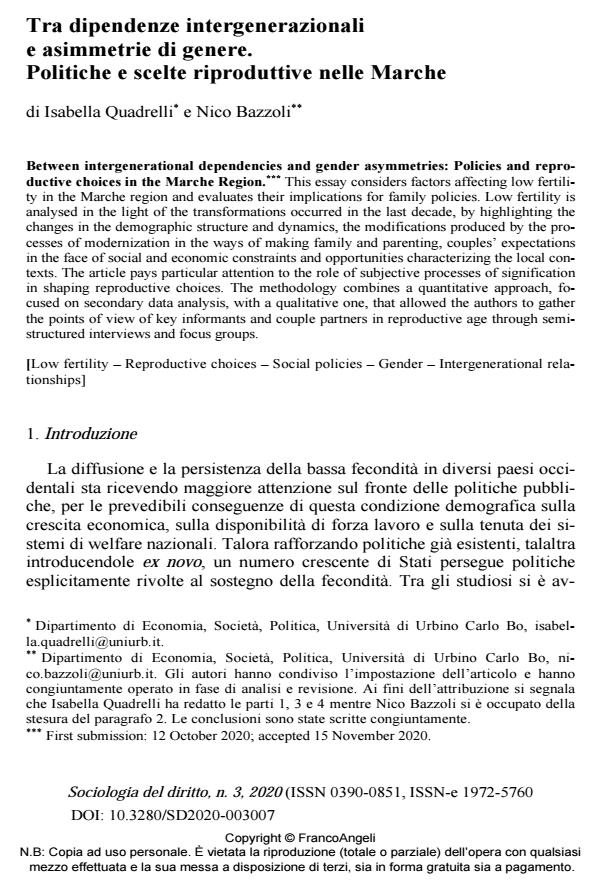Between intergenerational dependencies and gender asymmetries: Policies and reproductive choices in the Marche Region
Journal title SOCIOLOGIA DEL DIRITTO
Author/s Isabella Quadrelli, Nico Bazzoli
Publishing Year 2021 Issue 2020/3
Language Italian Pages 30 P. 136-165 File size 335 KB
DOI 10.3280/SD2020-003007
DOI is like a bar code for intellectual property: to have more infomation
click here
Below, you can see the article first page
If you want to buy this article in PDF format, you can do it, following the instructions to buy download credits

FrancoAngeli is member of Publishers International Linking Association, Inc (PILA), a not-for-profit association which run the CrossRef service enabling links to and from online scholarly content.
This essay considers factors affecting low fertility in the Marche region and evaluates their implications for family policies. Low fertility is analysed in the light of the transformations occurred in the last decade, by highlighting the changes in the demographic structure and dy-namics, the modifications produced by the processes of modernization in the ways of making family and parenting, couples’ expectations in the face of social and economic constraints and opportunities characterizing the local contexts. The article pays particular attention to the role of subjective processes of signification in shaping reproductive choices. The methodology combines a quantitative approach, focused on secondary data analysis, with a qualitative one, that allowed the authors to gather the points of view of key informants and couple partners in reproductive age through semi-structured interviews and focus groups.
Keywords: Low fertility - Reproductive choices - Social policies - Gender - Intergenerational relation-ships
Isabella Quadrelli, Nico Bazzoli, Tra dipendenze intergenerazionali e asimmetrie di genere. Politiche e scelte riproduttive nelle Marche in "SOCIOLOGIA DEL DIRITTO " 3/2020, pp 136-165, DOI: 10.3280/SD2020-003007